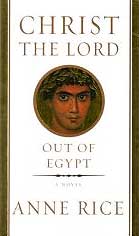The latest Bulletin of the International Organization for Septuagint and Cognate Studies (Vol. 38, 2005) is out (I actually received the volume a while back, but have not had a chance to finish the post). This is an excellent issue, with many excellent articles for those interested in Septuagint studies as well as translation theory and biblical studies. Wevers’s article is worth a read, if only for his engaging account of this work on the Göttingen Pentateuch volumes.
In addition, those interested in translation theory will want to read the articles by Aiken and Boyd-Taylor. Aitken has a very good summary of functional translation theory, while Boyd-Taylor has an interesting discussion of Descriptive Translation Studies (DTS). Both of these approaches offer more nuance than the typical discussions of “formal” versus “dynamic” translation theories based on Chomsky’s generative-transformative theory.
At any rate, here is the contents, with brief abstracts:
- John William Wevers, “The Dead Sea Scrolls and the Septuagint,� pp. 1-24.
Wevers provides a collation of Qumran Pentateuch LXX documents (Rahlfs MSS 805, 801, 802, 803) and then contextualizes his evaluation of their significance in light of current text critical practices, beginning with Lagarde and ending with reflections on his own (fascinating) experience preparing the Göttingen Pentateuch volumes. He concludes that while the Qumran Greek texts of the Pentateuch are not significant text-critically, the Hebrew MSS from Qumran are truly significant. - Petra Verwijs, “The Septuagint in the Peshitta and Syr.-Hexpla Translations of Amos 1:3-2:16,� pp. 25-40.
Verwijs examines the character and role of the LXX as reflected in the Syriac translations of the Peshitta and the Syr.-Hexpla, using Amos 1:3-2:16 as an example. After a thorough study of the texts and their translation technique, Verwijs concludes that the communities that produced the Peshitta and the Syr.-Hexapla employed the LXX, though in the case of the Peshitta the reflection of the LXX may be due to the translator’s recollection rather than access to an actual text. - Claude Cox, “Tying It All Together: The Use of Particles in Old Greek Job,� pp. 41-54.
Cox describes the use of coordinating conjugations in OG Job. While Hebrew has relatively few sentence or clause connectors, Greek has many, and Cox finds that the OG translator incorporates many more coordinating conjunctions in his translation, particularly γάÏ? and δÎ. This frequent use of coordinating conjunctions brings the text together into brief sections or paragraphs in a way that is not apparent in its Hebrew Vorlage. - James K. Aitken, “Rhetoric and Poetry in Greek Ecclesiastes,â€? pp. 55-77.
While the OG translation of Ecclesiastes is characterized by a high degree of formal equivalence, Aitken underscores the presence of a number of rhetorical features in the translation, including variatio, polytoton, anaphora, parechesis, assonance, isocola, and homoeoteleuton. Thus, the translator was not “slavishly literalâ€? but employed features consistent with Greek rhetorical style in order to produce a text that is both faithful to its Hebrew Vorlage and engaging for its Greek readers. Aitken concludes with a brief discussion of the merit of a functional translation theory that takes into consideration the type of text that is being translated, over against the generative-transformative model. Thus, LXX-Ecclesiastes may be better described as an “informative-expressiveâ€? translation than simply “literal.â€? - Cameron Boyd-Taylor, “Calque-culations — Loan Words and the Lexicon,â€? pp. 79-99.
Boyd-Taylor brings the Descriptive Translation Studies (DTS) of Gideon Toury to bear on the study of semantic borrowing and calques in the Septuagint. DTS understands the act of translation as a product of and for the target audience in which the some aspects of the source text are invariably retained for a variety of reasons. Seen in this light, stereotyped equivalents are examples of habitual lexical interference or transfer. The calque, on the other hand, “presupposes the institutionalization of a stereotype, such that the transfer of function from the source item to its counterpart… becomes itself a convention of the target language� (pp. 84-85). To illustrate his discussion, Boyd-Taylor examines the usage of κοίτη to refer to sexual relations and concludes that it may plausibly be a calque in some configurations. All in all, he concludes that identifying calques “is a precarious business� (p. 99) and many so-called calques should be reexamined. - Takamitsu Muraoka, “Gleanings of a Septuagint Lexicographer,� pp. 101-108.
Muraoka briefly reflects on the influence of Semitisms and textual criticism on LXX Lexicography. In regards to the former, he discusses three examples of lexical Semitisms in the LXX: ἀγχιστεÏ?ω “to do a kinsman’s office,â€? θυμόϛ “breath, venom,â€? and á½?μοιόω “to consent, to concur.â€? In regards to the latter, while it was policy to base A Greek-English Lexicon of the Septuagint on the Göttingen LXX editions, Muraoka departed from this policy on occasion (one example he discusses is Num 11:13).

 I received a kind email the other day from the novelist Anne Rice. It appears that she came to my site looking for information on recent manuscript finds in Israel and wanted to convey thanks for my “interesting articles on many subjects.”
I received a kind email the other day from the novelist Anne Rice. It appears that she came to my site looking for information on recent manuscript finds in Israel and wanted to convey thanks for my “interesting articles on many subjects.”